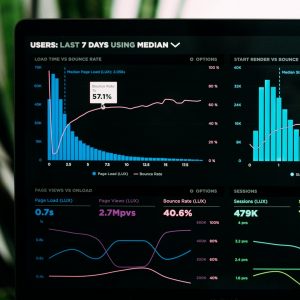1st Party Data = 1st Rate Experience

SPOILER ALERT: this is not an article about navigating the uncertainty of the #cookieless future. However, those who have been following the cookieless saga understand the power and importance of #firstpartydata. In the retail sector, brands are often subject to high-level, unactionable sales data from retailers. Brands need actionable data, and they need it now because customer retention is more vital than ever. 44% of respondents to a recent survey would rather not go back to a brand after having switched. This data can be expensive to purchase, so acquiring it organically is attractive to many. However, for brands without physical storefronts, one major way to build an organic 1st party database is through owned and operated #D2C websites (and applications).
Website activity data is collected from the moment a user lands on a domain. One of its key powers is in its ability to inform #personalization efforts. In other words, the behavioral and demographic insights gained about individual customers can be used to tailor the website experience to each person. This is powerful considering 80% of consumers are more likely to make a purchase when brands offer a personalized experience. Thus, personalization can be leveraged to increase conversion, which in turn generates more consumer data. With more data comes a richer consumer profile, allowing brands to increase the retention rate and lifetime value of customers by consistently giving them what they truly want. Tools like @Optimizely and @Salesforce Interaction Studio are already helping brands achieve these goals. They create dynamic demographic and behavioral user profiles based on website activity data, which are calibrated in real-time as site activity increases. These users then receive personalized experiences tailored to their affinities, raising the probability of conversion. As they interact with the website and more data is collected, they receive an increasingly improved experience with content and product suggestions aligned to their interests. Brands who employ this strategy can create lifetime customers and progressively gain first party data from registered users in return for a highly personal shopping experience (think “style quizzes” or surveys that solicit information used to tailor the experience to the individual). Lastly, for those concerned about the cookieless future and its impact on personalization, fear not. These onsite cookies, which improve web browsing experiences by storing credentials and allowing other customization options, are collected at the domain level and will remain after offsite browser-based cookies are gone.
Personalization can be used to great effect, but there are many other methods in the spirit of Conversion Rate Optimization (#CRO) that can be implemented to increase the likelihood of converting actions and building a robust organic 1st party database. From testing different feature rollouts to offering Buy Now Pay Later (#BNPL) payment options, running CRO experiments is the key to more leads, sales, and data. My advice is to start tracking, testing, and learning now. Every website visit is an opportunity to understand what your customers look like, what they’re looking for, and whether you are providing it. Every failed conversion is a lesson in how you can improve, and every converted sale is a new opportunity to gain a lifetime customer. In any scenario, D2C is an invaluable tool in the race for first party data. Now, dust off that website and put it to better use.
For more information contact us.


